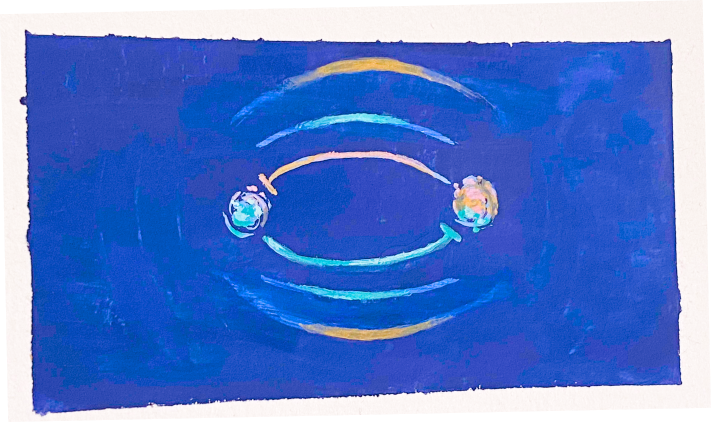The olfactory epithelium of a mouse is curled up like scrolls inside his nose. Smell is high-dimensional, has no notion of distance — how far is the smell of sweet from the smell of vapor? For each arbitrary shape, an arbitrary sensation; the Moon has a smell, though it has never been part of your evolutionary past.
Researchers once argued about the cortex that stood right above the mouse’s nose; some said it was for smell, some said it was for fear. The argument ended after they realized that, to a mouse, they are one and the same: their entire world is encoded in smell.

The cortex is a sheet 5 microns thick. Along the perpendicular axis, neurons receive input from the same part of the brain and respond to the same property. Neuroscientists envision the cortex as a packing of{" "} cortical columns.
Make no mistake, the term "cortical column" is more symbolic than concrete. You will not find discrete cylinders of neurons when you cut up a brain, nor will you find functional boundaries where the receptive field changes abruptly.

Along the cortical surface, we often see topographic organization. Sensory and motor systems project to the brain in ordered ways; you can recover a sensory surface from a cortical surface. By traveling across the brain in space, you can travel across the visual field, locations on the body, or frequencies of pitch.

Oscillations are fundamental to the working of the brain. Like the clock cycle of a computer, oscillation is used to synchronize operations. Information travels in ripples: someone says your name — beat 1. Spiking of auditory neurons — beat 2. Spiking of those neurons' neighbors — beat 3. It spreads to all of those neighbors' neighbors — beat 4. Where is oscillation located? In individual neurons, in networks of neurons, in coupled inputs and outputs? Do you need an environment to oscillate?
Researchers in the 50s removed the spine of a cat and found, to their astonishment, that the disembodied spine still spiked with rhythmic repetition. Since then oscillators have been found to be a general property: all vertebrates and some invertebrates can generate rhythmic output in the absence of rhythmic input.

The cochlea is a neat example of energy transduction. Sensors everywhere on the body are tasked with translating energy waves into the common language of neural spikes.
Sound is just a pressure wave, continuous in time. FFT is used to decompose a continuous signal into power at different frequencies — the cochlea performs a physical FFT. Some parts of the cochlear membrane are thicker than others, making them more responsive to lower frequencies.